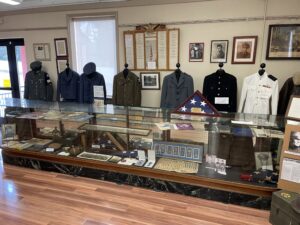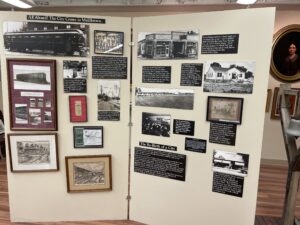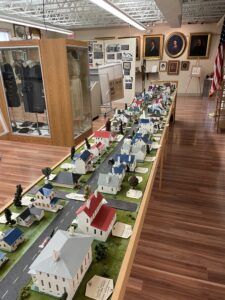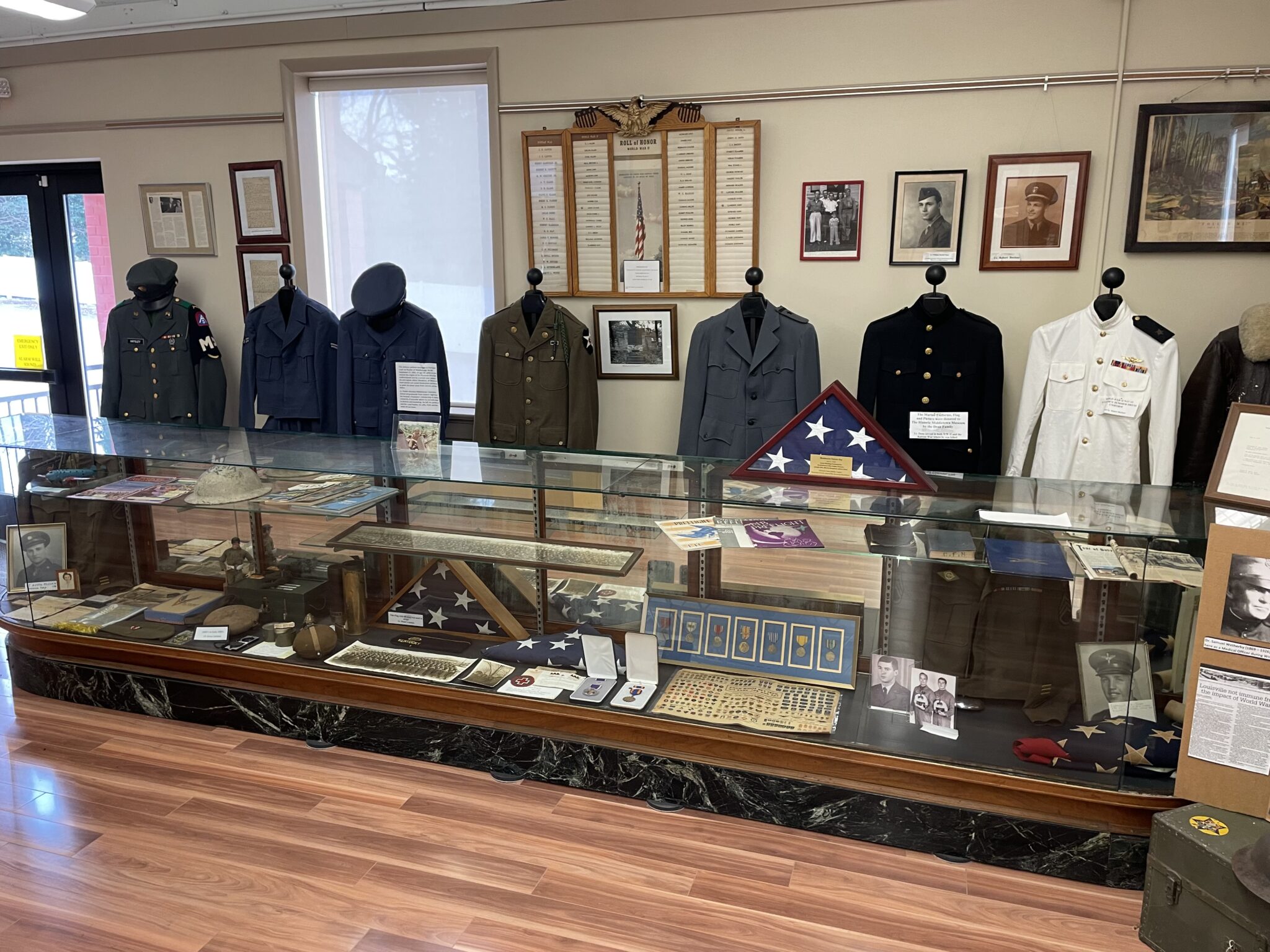Middletown Has a Rich Local History Many Might Not Expect
Writer / Cassady Lamb
Photography Provided
Middletown, Kentucky, is a time capsule amongst the cityscape. Yes, the city has a Walmart, Target, fast food restaurants and coffee shops, but historical preservation is a large part of keeping the city’s historical roots visible and safe.
It has been 225 years since Jefferson County Court chartered Middletown as a city in 1797. The city served as a middle point between Louisville and Shelby County, and it is widely believed that is why the city’s name prevailed.
Kentucky was a part of Virginia starting in 1776, when the 13 colonies were severed from Great Britain. These states were combined until 1792, shortly after the American Revolution, and Kentucky was made the 15th state, following the last colony, Nova Scotia, which was located in parts of Maine and Canada. Kentucky was the first state admitted to the Union left of the Appalachian Mountains.
Middletown was one of the earliest settlements in Kentucky, becoming a city just 16 years after Kentucky became a state. It now lies less than 20 miles from downtown Louisville.
In 1946 a woman named Edith Wood, a Middletown native, graduate of Anchorage High School and Miami University (Ohio), as well as co-founder of Okolona High School, compiled a story to be published.
This story includes 150 years of Middletown history, from the beginning until that point. The book is called “Middletown’s Days and Deeds.” The 76-year-old book is up for sale on Amazon.
Wood was passionate about Middletown’s history. She initially started to learn about the town’s history from her father. In the 1930s, as the preface of the book reads, she began to jot down what her father was saying to her regarding their town.
Wood is a relative of Thomas Wood, an emigrant from Virginia in the 1800s who headed a large family line that would lead down multiple generations to Edith Wood. She would then research all the way back to Thomas, to find her roots.
Kentucky pioneers, Wood says in her history book, were the first settlers in and around Middletown, and lived in single log cabins or forts. Windows were made of paper that was then smothered with bear grease.
These original Middletownians also ate a lot of meat such as venison and bear. These people led simple lives and ate simple meals.
 Although these people led simple lives, they still spent time curating beautiful, rich buildings, at which architecture enthusiasts would gaze in awe 200 years later.
Although these people led simple lives, they still spent time curating beautiful, rich buildings, at which architecture enthusiasts would gaze in awe 200 years later.
Most, if not all, people who live in Middletown know about the Middletown Inn. It is located right on Main Street.
Wood describes in her book the history of many historic buildings in Middletown. This inn is a building that many people drive past every day, but they would never know the rich history that it holds if people like Wood had not researched and published their findings.
A man named James S. Spear originally bought the Middletown Inn and another property for $15 from the trustees of Middletown.
The inn had been passed down nine times from 1808 to 1945. The half brick, half log building with 18-inch walls originally had an oak tree in the dining room.
Edith Wood’s father, William Harlan Wood, designed and created the interior of the Methodist Church. Her grandfather, William Benjamin Wood, built the church in 1899.
Harlan Wood apprenticed under his father, and his daughter, Edith, describes the work he did: “Build today, then, strong and sure, with a firm and ample base and ascending, and secure shall tomorrow find its place.”
Situated in the former United Methodist Church on Main Street in historic Middletown is the Historic Middletown Museum. The museum holds a lot of life from the past, plaques, newspaper clippings, photographs and posters. Every item holds a story.
The City of Middletown and Historic Middletown Inc., who runs the museum, also hold cleanups at the Middletown Cemetery multiple times per year.
Comments from families and friends of those connected to the past, or the people themselves, flood the comments sections of the museum’s Facebook page, as they reminisce on memories in the city.
Within the city is a Historic Preservation Commission, a subchapter of the City Commission that contains six appointed chair members. One of those chair members is Commissioner Mark Stigers, who has been in the position since 2016.
According to Middletown’s Code of Ordinances, Chapter 33, the purpose of the Historic Preservation Commission is to effect the goals of preserving the heritage and character of the early town of Middletown, by promoting the educational, cultural and general welfare of the public through preservation and protection of historic buildings, places and areas.
Stigers previously held many roles within the Middletown Fire Department, including firefighter, fire marshal and safety officer. He retired from the force in November 2013 as the assistant chief. Stigers also serves as mayor pro tem. Stigers has now been involved in Middletown history and preservation for around 10 years.
“What you see from the street, we review and approve,” Stigers says. “The historic properties, we really watch those.”
Stigers says most people in the city know about the Historic Preservation Commission.
“We put a little something in the city’s newsletter and website once in a while,” Stigers says. “Most of it is just word of mouth.”
Preserving the history of this town of 9,600 people is important. It allows the younger generations of Middletown to have a glimpse back to the past, and for the older generations to remember the memories that this city holds for them.
Historical landmarks like Middletown’s first gas pump, which hasn’t been pumped since 1936, and the Middletown Inn, established in 1798, are here to stay, and serve as a reminder to those who built the town.
Most know Middletown as a bustling city, with restaurants, schools and families. However, in her book, Wood recommends closing our eyes and trying to picture Middletown in the beginning: “Let the houses as you now know them vanish. Fill their places with trees and an occasional wigwam or log cabin. Watch the bears strolling down Middletown’s Main Street to Beargrass Creek for a drink of its cool, clear water and a meal of bear grass along its banks.”
Beargrass Creek was where the main road to Louisville crossed.
Wood continues in her book: “See the Indians skulking behind trees, waiting to tomahawk white men out to kill bears for molesting their families. For wild animals and Indians were there to meet the brave and hearty eastern pioneers whom they served as both friend and foe.”
molesting their families. For wild animals and Indians were there to meet the brave and hearty eastern pioneers whom they served as both friend and foe.”
Of course, we know that there is history in our town, but until we put on the shoes of those who formed the Middletown we know now, we will never know the full story.
We should appreciate the full story, and those who are trying to preserve it. For some of us, this town raised us, as it did the generations before us.





